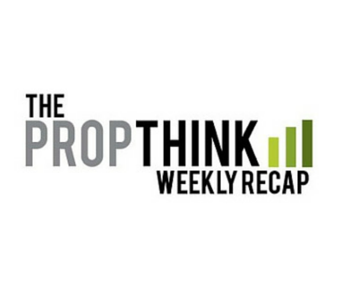The week started off with a bang: four healthcare-related acquisitions totaling about $18 billion in value hit the wires Monday morning, as well as a handful of early development collaborations.
Horizon Pharma (HZNP) is acquiring Hyperion Therapetics (HPTX) at $1.1 billion, or $46 per share. The deal represents a 35% premium to Hyperion’s volume-weighted average price for the trailing 60-days, but HTPX closed last Friday at $45.
Teva Pharmaceuticals (TEVA) is folding in Auspex Pharmaceuticals (ASPX) at $3.5 billion. Auspex’s lead drug, a deuterized tetrabenazine called SD-809 (essentially a better version of Xenazine), is being developed for the treatment of chorea associated with Huntington’s disease, tardive dyskinesia, as well as Tourette’s syndrome.
United Health’s (UNH) bought the pharmacy benefits manager Catamaran Corp (CTRX) in a deal worth about $12.8 billion, a premium of about 27% from the previous close. financed with cash and new debt. Catamaran emerged from the merger of SXC Health Solutions and PBM Catalyst Health Solutions in 2012.
Fujifilm announced the $307 million acquisition of Cellular Dynamics International (ICEL) – a 100% premium to Friday’s close. ICEL had $17 million in revenue last year and produces functional human cells for drug discovery, screening, and early safety/efficacy testing.
Still-private but going-public Aduro Biotech received $200 million in cash from Novartis (NVS) for the discovery of cyclic dinucleotide immunotherapies targeting the STING (Stimulator of Interferon Genes) pathway. Novartis also made an initial equity investment in Aduro of $25 million, with a commitment for another $25 million at a future date (perhaps the IPO?). Aduro is eligible for $750 million in milestones, plus profit-sharing on successful products. For a discovery program, the upfront is impressive, in our view.
Intrexon (XON) and Ziopharm Oncology (ZIOP) will collaborate with Merck KgaA on new chimeric antigen receptor T-cell (CAR-T) products for the larger pharma company. Intrexon received an upfront payment of $115 million for development of two initial targets selected by Merck KGaA, and the company is eligible to $826 million in development, regulatory and commercial milestones, as well as tiered royalties on potential product sales. Again, the $115 million for non-existent products is impressive.
Trillium Therapeutics (TRIL) priced an equity offering this week at $19.50 per share. Trillium conducted a reverse split and moved to the NASDAQ late last year at about $7.00 per share, and this latest financing was done at ~300% improvement to their last, in 2013.
TRIL will sell 11.5 million in common stock, plus Series II Preferred shares convertible into 1.1 common for expected net proceeds of $47 million ($53 million with the underwriter’s option). The secondary should bring Trillium’s cash position to around $73 million.
If you haven’t read it yet, read our recommendation on TRIL from last Fall. PropThink Premium members who followed us in are up almost 250%.
We would have liked to see Trillium move away from offering preferred equity, cleaning up the somewhat complicated capital structure rather than adding more convertibles. Regardless, the offering stocks TRIL’s coffers at a time when the company will be increasing its R&D spend and possibly entertaining partnering/collaboration discussions, though we would not expect a partnership in the near-term. TRIL has a lot to prove, but the anti-CD47 approach to treating cancer remains as intriguing as ever. Read on.
Dyax Corp. (DYAX) climbed 40% on Wednesday with the release of phase 1b results for DX-2930, an inhibitor of plasma kallikrein being tested in the rare inflammatory disease, hereditary angioedema (HAE). The small clinical trial met its safety and secondary efficacy objectives and Dyax announced in connection that the drug had received fast-track designation from the U.S. FDA.
DYAX added $1.5 billion in market value with the data, taking the company to a $3.7 billion market capitalization. Dyax already markets Kalbitor for the treatment of HAE attacks, and DX-2930 differs in that it may prevent HAE attacks. Attack prevention remains an unmet need in HAE.
One or more of PropThink’s contributors are long TEVA, ASPX, UNH, CTRX, NVS, XON, ZIOP, or TRIL.



